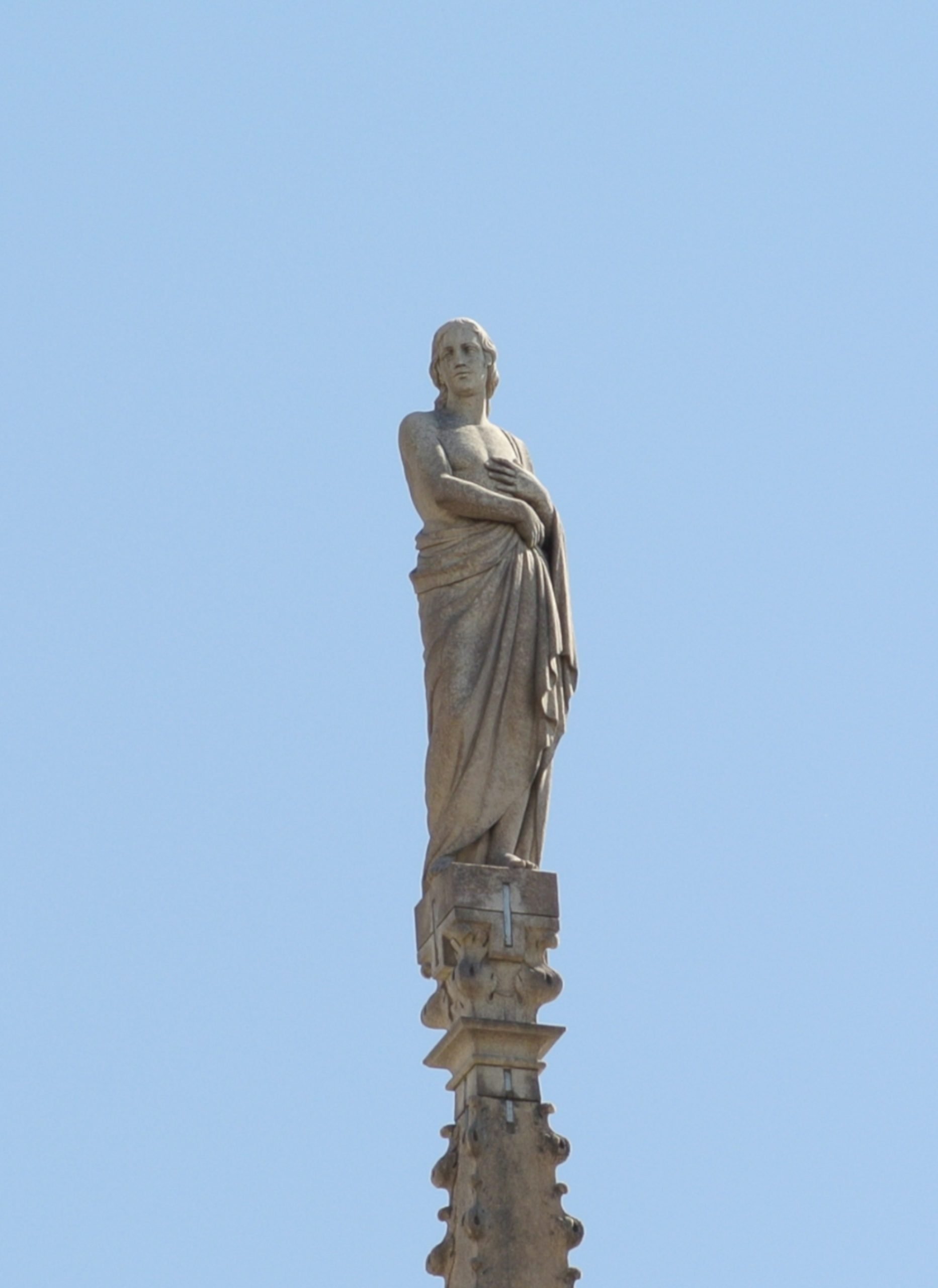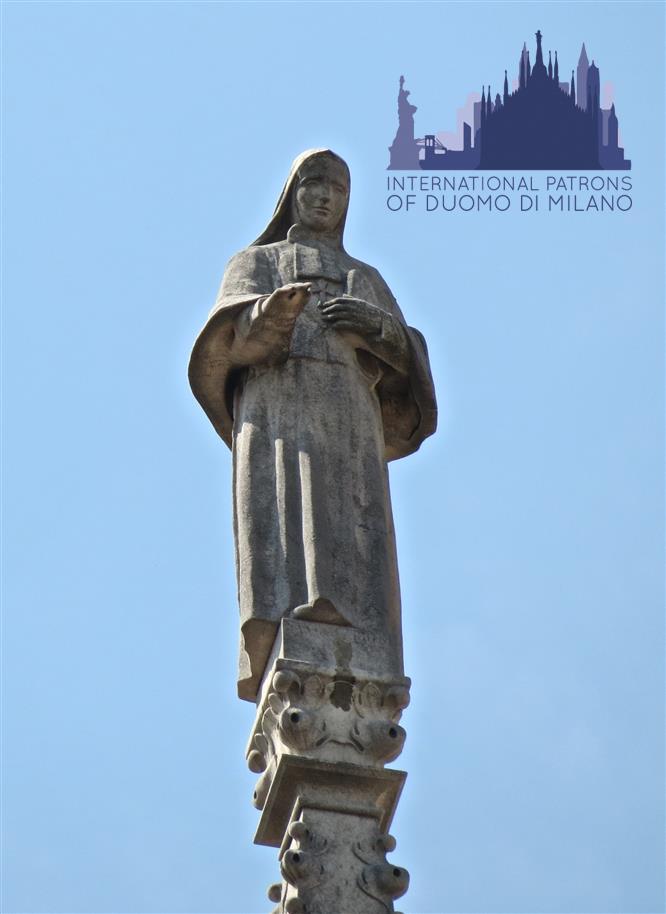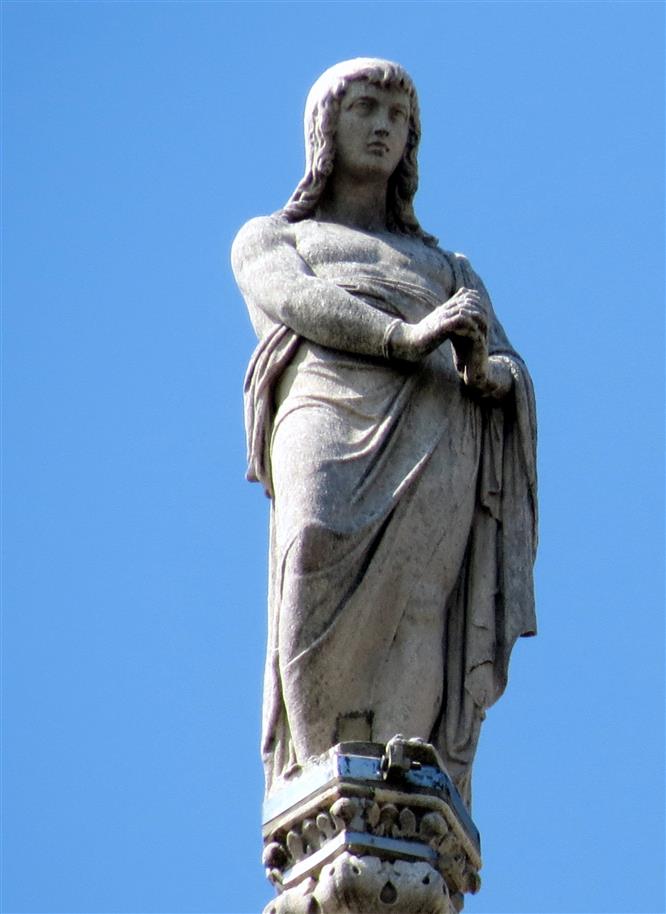Placed on the apse – facing east as in all the churches of Christianity – this saint seems to be holding something in his hand, lost in time. So called because he is placed under the lash of the Levant, the wind that blows from the East and takes its name from the place where it is born, or where the sun rises. His is a summer wind that brings fog and precipitation while in winter it generates dangerous storms and waterspouts. It was and still is the terror of the sailors of the Balearics, where it is born, and of the Adriatic, where it often unleashes its fury. The saint looks at that sea, which from Milan has its closest bay in the Gulf of Venice, a gateway to the East, a place of exchange between ships full of spices, fabrics, perfumes. Every day, this unknown saint enjoys the warm rays of the summer dawn and cools off under the Levant wind.
The tales of the statue in Dome’s building site:
The original statue of the Saint was made in 1813 by Antonio Pasquali, who never named the work with a specific Saint’s name. The one placed today on top of the G38 Spire is, instead, a probable reproduction from the 1930s.
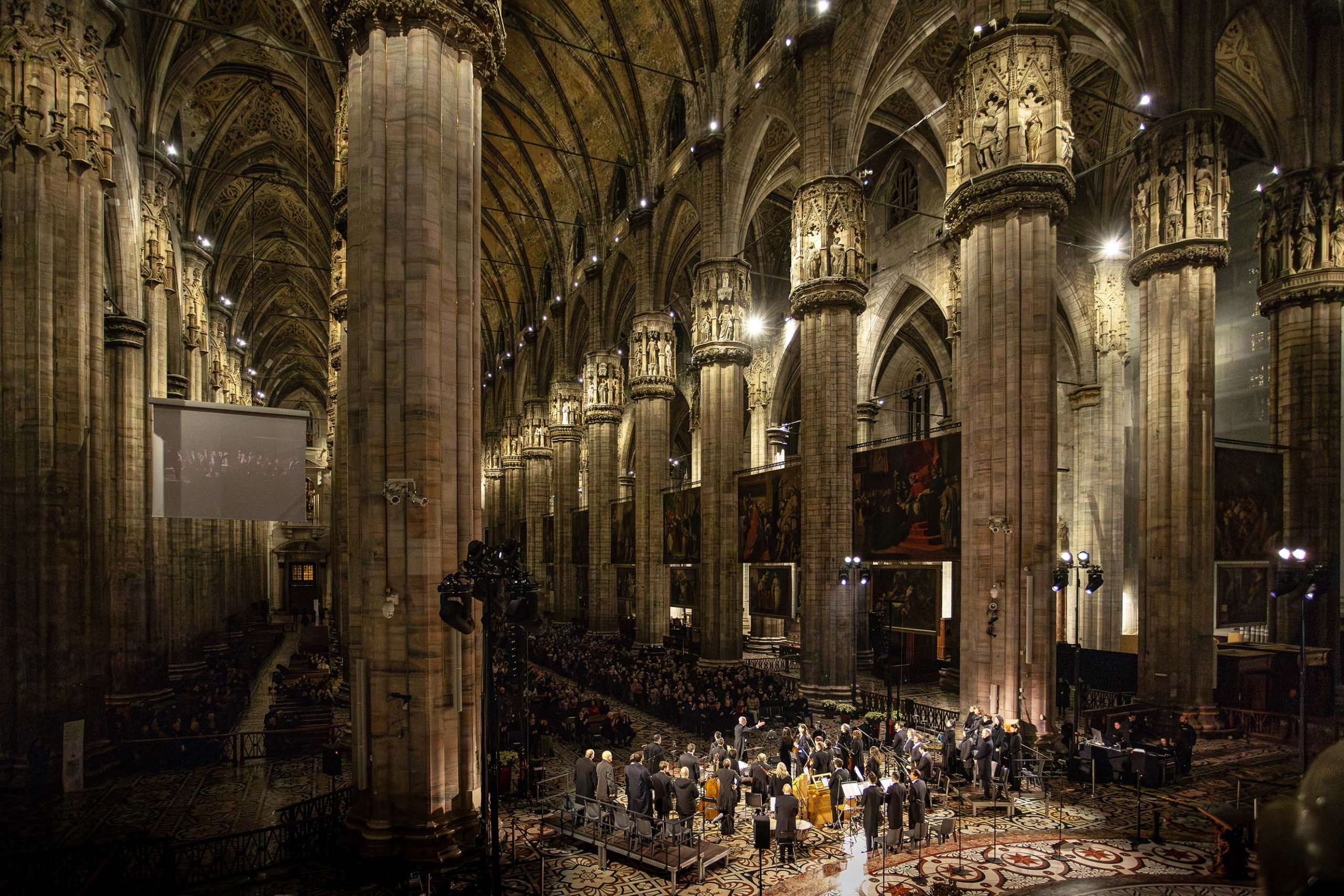
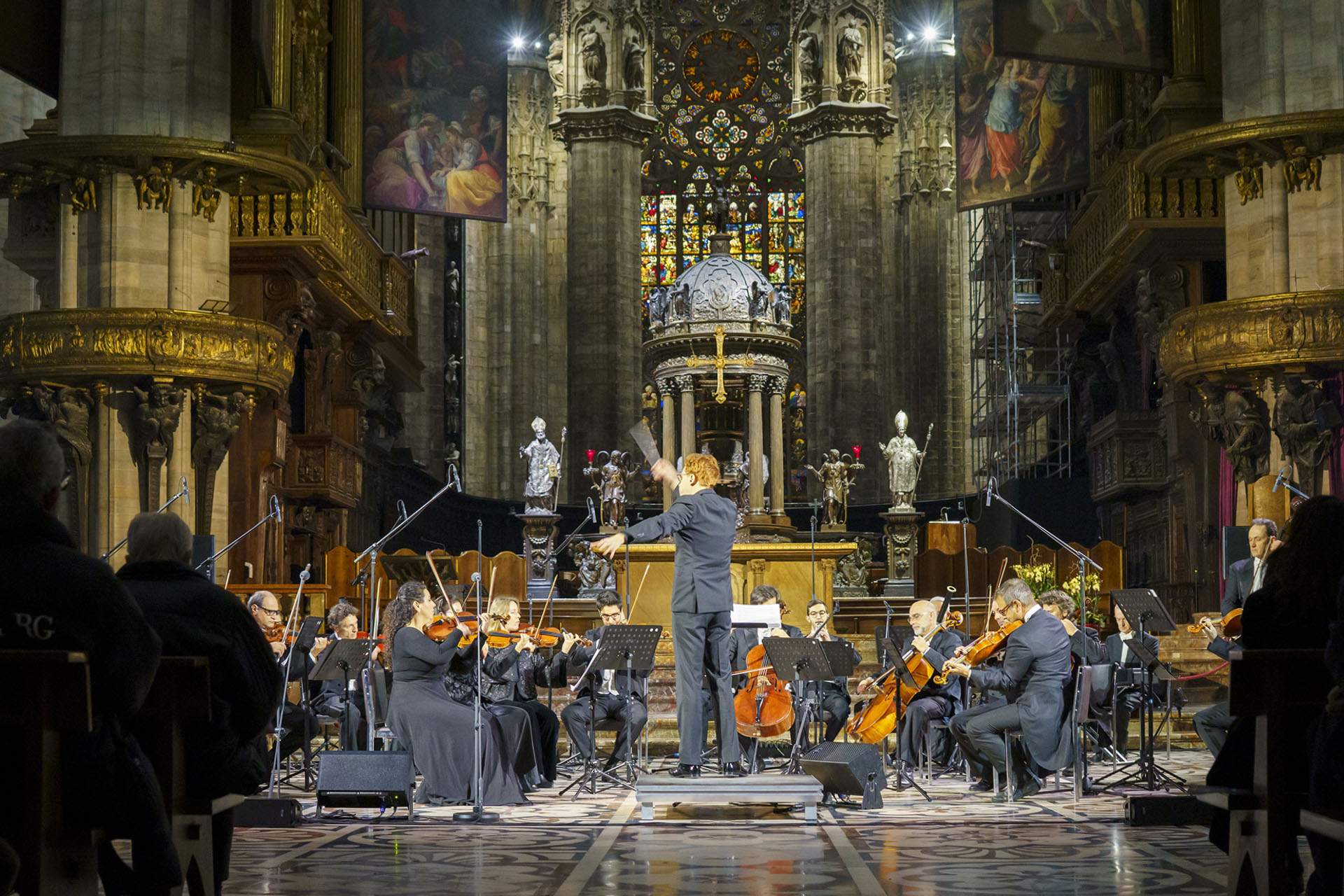
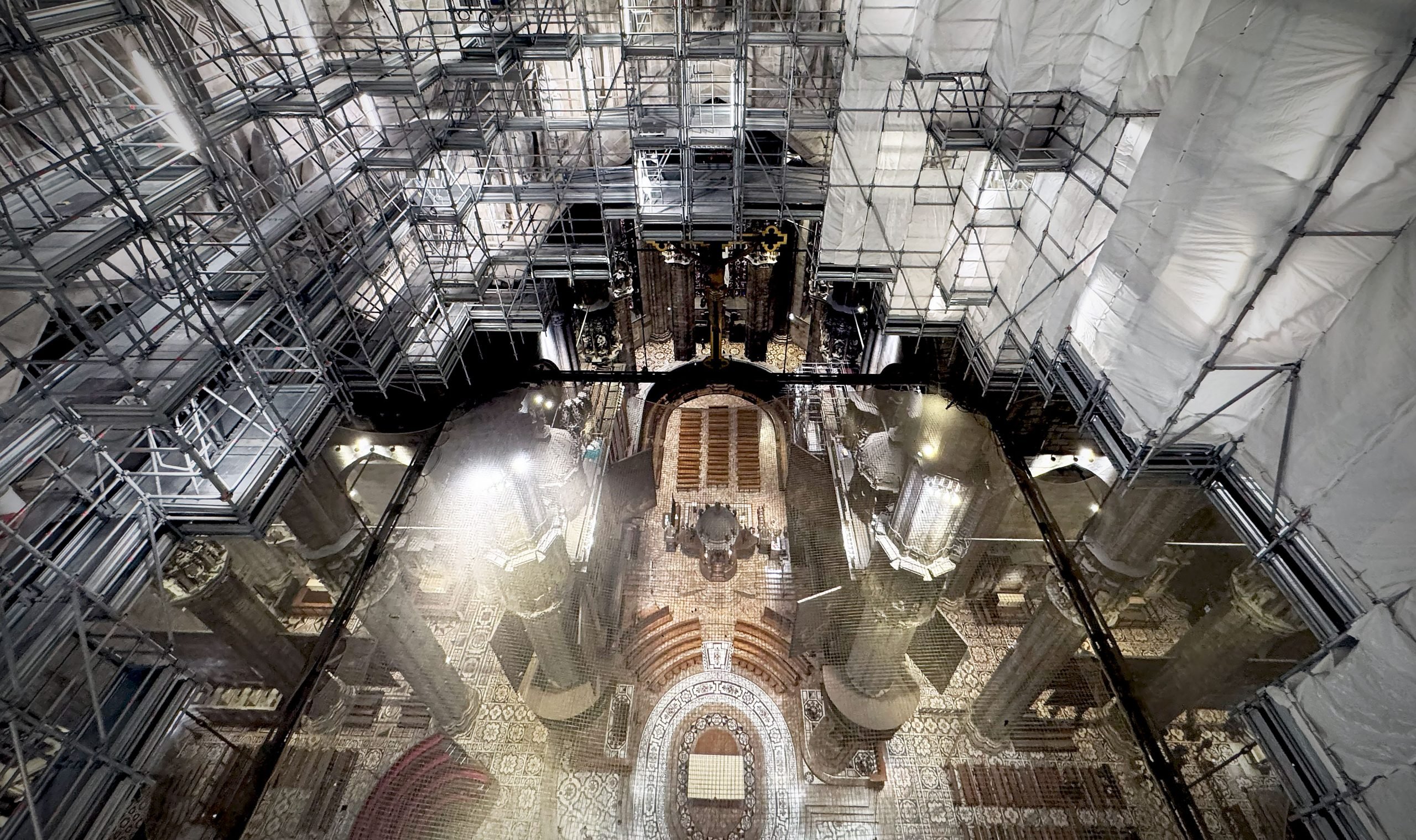


 Tiburio
Tiburio